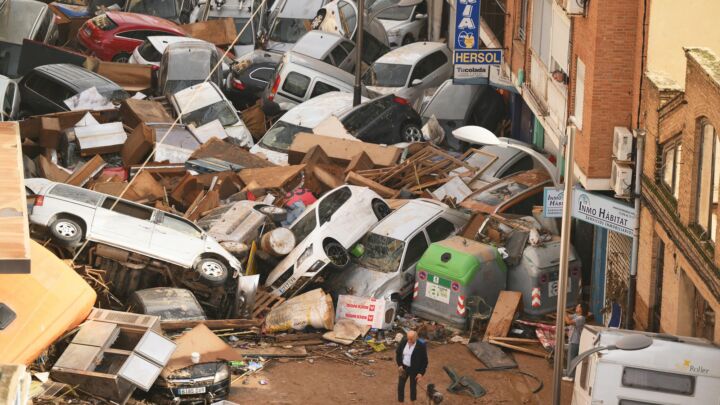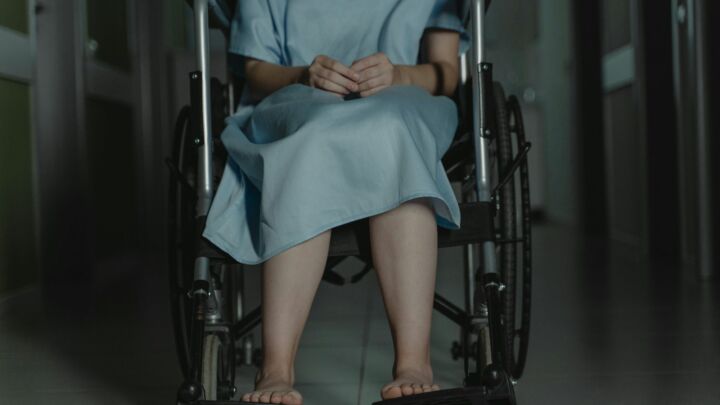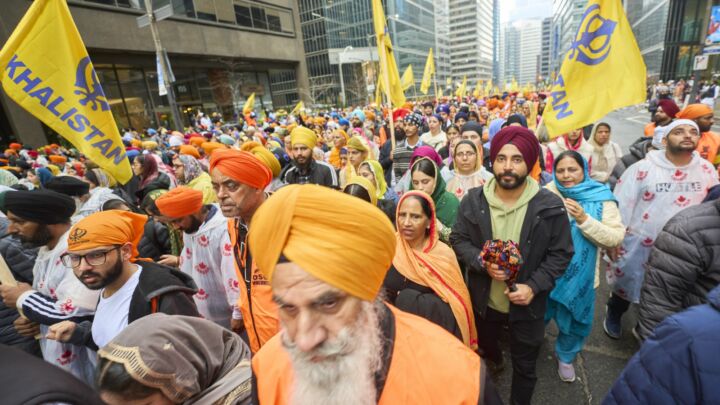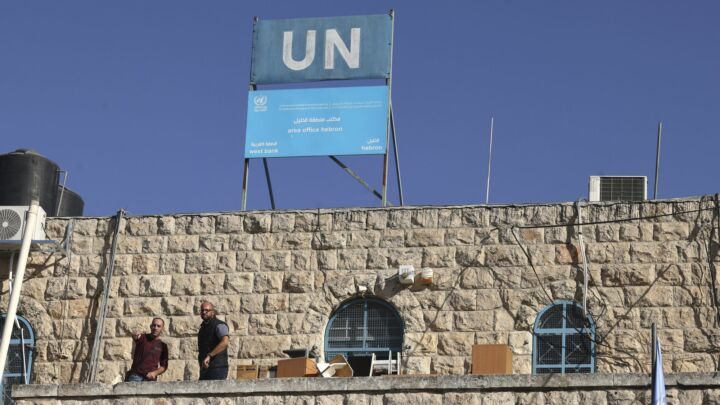Forget the hangover, celebrate the stadium
The 2012 stadium has hosted some of our most treasured sporting memories; let’s relax about what comes next.

Want to read spiked ad-free? Become a spiked supporter.
So many amazing things have already happened in the Olympic Stadium in its short life that it seems churlish to criticise it. Putting aside the fascinating, contentious opening ceremony, the athletics that have taken place underneath the signature ring of caliper-shaped lighting stanchions has already made the stadium the receptacle of some of Britain’s most treasured sporting memories.
To those who love sport, and stadiums are built for them, the 43 amazing minutes it took Team GB to win three gold medals on Super Saturday is unlikely ever to be surpassed. It was the perfect passage of Olympic sport, particularly if you are British. After a successful day elsewhere in the Games for the host nation, the action returned to the ceremonial heart of the event at primetime on a Saturday night, where the locals won an unprecedented succession of athletics gold medals. But then, given these moments, it is even more surprising that the original plan was to take the stadium apart – to ‘demount’ it – in September.
As it stands, the Olympic Stadium is architecturally impressive. Although it is basic – one can see the concrete risers for the seating through the steel-tubed structures – it celebrates simplicity. The crown created from the lights gives the structure height, a sense of presence across the park and a genuinely challenging, unexpected image for the viewers at home. It doesn’t look like any other stadium we’ve ever seen. The crown, and the rest of the tubular cross-bracing which has supported a veil of thin artfully appended strips of PVC during the Games, also speak of an architecture of temporary structures which the British have been very good at. Indeed, one of the architectural consultants on the Olympic Stadium was Sir Peter Cook, a member of the architectural group Archigram, which suggested an architecture of mechanised adaptation in the late 50s, influenced partially by Pop Art but also a developing consumer culture. In Archigram’s architecture – on paper, they were never built – there is a direct relationship with the user, which marks such a contrast with architects today.
That much is good but, sad as it is to admit, the stadium’s primary use is nearly over. The ‘hangover’ analogy for the immediate legacy of the London Olympics has been acknowledged by Boris Johnson and his new best friend Rupert Murdoch, so it may seem curmudgeonly to describe what the headache is going to be like while we’re still going into the fridge for more beer. But then it was the Olympic movement itself which tried to legislate against this hangover with its focus on ‘legacy’ – a term which is used within the London Organising Committee of the Olympic Games (LOCOG) to magically predetermine the day after, hangover free. One of the successes of the planning of the Games has been to choose which of the secondary venues should remain and which should go. Generally, the venues to the north and west of the park, furthest from the transport hub – like the hockey stadium and the basketball stadium – are temporary; those closest to public transport are not. The handball arena, for example, will become a multi-use leisure centre.
Yet with the Olympic Stadium, this thoughtful strategy falls apart. Back in 2008, Lord Coe chairman of London’s bid to win the Olympic Games, said, ‘we are not in the business of building football grounds’. And yet it looked very much as if they were. While the process led by the London Legacy Development Agency to determine the future use of the stadium is officially on hold, it is very likely that West Ham United will be the future tenants, despite the irregularities in their first bid. Rather than demount the 80,000 seats to a 25,000 seat stadium for athletics only, as Lord Coe had suggested the London Olympic team would do to the International Committee, the stadium will be remodelled into a stadium of 60,000 seats, containing a permanent running track and a football pitch. This will cost £95m, including £35m of public money plus a £40m loan from the cash-strapped Newham Council.
What Lord Coe should have said is that he is not in the business of building good football grounds. Built in a cramped site on a bend in the River Lea, the stadium has minimal facilities. It will contain a simple bowl with seating around a field of play. Much of the hospitality facilities are provided in separate temporary structures on approach, a situation that could not be countenanced for league football. It has very limited shelter and, perhaps most importantly, it has got an athletics track, which must remain in place. It was designed to be an athletics stadium for the sport at its singularly most popular moment, the Olympics, but also at its less well-supported quotidian level. It was conceived as the antithesis to Athens 2004, where a number of venues – particularly the volleyball arena (yes, they built an arena for volleyball) – had absolutely no use after the Games. London, however, has over-learned the Athens lesson.
Couldn’t the Olympic Delivery Agency have created a stadium that uses movable stands, something like the Stade de France in Paris? Yes it could, indeed when Spurs and West Ham were consulted on the stadium in 2006, this idea was mooted. (Indeed, this would have been more in keeping with the ideas of Archigram – a reality of adaptability, rather than an aesthetic gesture to it). But the body chose not to, because athletics had to have pre-eminence. Coe deserves praise for delivering the Games twice, organising it successfully but also winning it in the first place. By taking 30 children from the East End of London to Singapore as part of his permitted number of delegates in July 2005, Coe created an intoxicating image of the Games as a powerful tool for moral improvement in an impoverished area. The Games was awarded to London because they reminded the Olympics of its own narrative. The price to pay for the benefits of the Games is that sports infrastructure is built to host it. London’s ‘adaptable’ stadium is an attempt to have one’s cake and eat it.
Once the 80,000-seater stadium was built, the whole plan to predetermine its post-Games use before the events themselves fell apart. Who would the cost of demounting the stadium fall upon? Who would pay for the maintenance of the stadium once it had been demounted? While we gorge ourselves on the last bit of athletics we’re likely to watch for another few years, football clubs are eyeing the stadium in a different way. And they are willing to go to extreme lengths to get what they want. Tottenham Hotspur FC have had West Ham’s successful bid quashed through an expensive judicial review. They are still using the possibility of leaving north London as a means of leveraging more concessions from their local borough.
There is set to be even more wrangling after the Games, and particularly difficult technical ones given the problems that the original plan to demount the stadium have created, such as a cramped site and the lack of facilities within it. Olympic stadiums are always adapted – they never quite fit the bill for future tenants – but they are always adapted upwards. They go on to provide some use, mixed with the simple joy and pleasure gained from their continued existence. Or, as in the case of the Beijing National Stadium, they simply exist as great works of public sculpture, which are visited for no other reason than to behold. Seb Coe omitted to consider this when proposing a scaled-back stadium. Use isn’t everything and cities progress. The earlier design flaws of the stadium may yet be reconciled as the stadium expands to meet the ambitions and desires of a new city in east London.
Tim Abrahams is the author of The Stadium, published by Machine Books.
Celebrate 25 years of spiked!
A media ecosystem dominated by a handful of billionaire owners, bad actors spreading disinformation online and the rich and powerful trying to stop us publishing stories. But we have you on our side. help to fund our journalism and those who choose All-access digital enjoy exclusive extras:
- Unlimited articles in our app and ad-free reading on all devices
- Exclusive newsletter and far fewer asks for support
- Full access to the Guardian Feast app
If you can, please support us on a monthly basis and make a big impact in support of open, independent journalism. Thank you.






Comments
Want to join the conversation?
Only spiked supporters and patrons, who donate regularly to us, can comment on our articles.